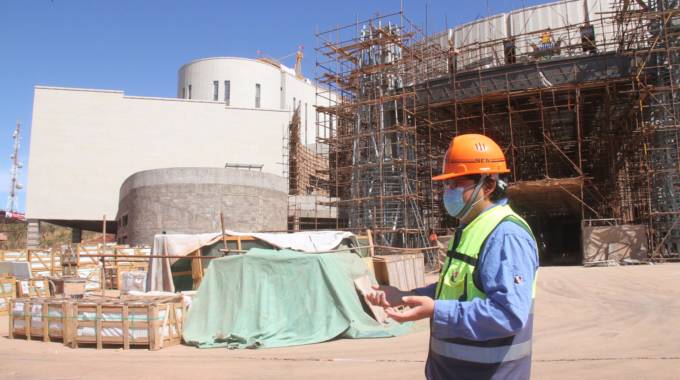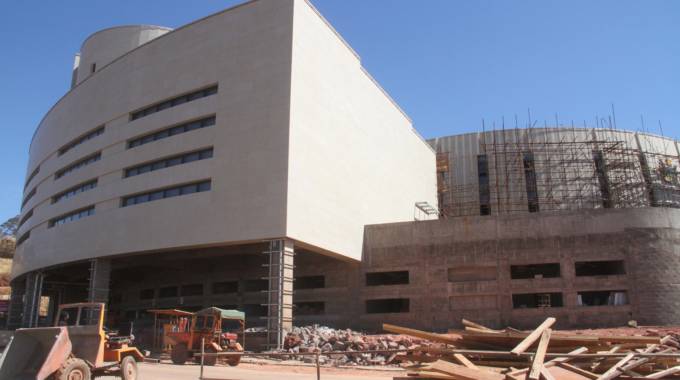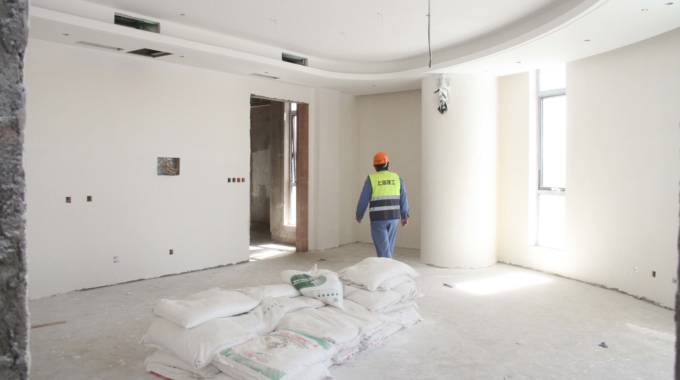
The Sunday Mail

Leroy Dzenga
Trudging sounds of safety shoes, roaring machinery and sharp hisses from grinders from atop an unforgiving slope greet you from a distance.
At the summit of the hill is a structure slowly shedding its abstractness, revealing a beauty that only architects and structural engineers were privy to.
Beneath a maze of scaffolding lies a work of engineering art, the new Zimbabwe Parliament in Mount Hampden, on the western edge of Harare.

When construction work began in 2018, it was hard to believe the artistic impressions would be brought to life.
However, the 400 men and women who have toiled since the inception of the project have done exactly that.
Some workers are drawn from surrounding areas, while others travelled nearly 10 000 kilometres from China to work on the key national project.
The US$200 million building, which is a gift to Zimbabwe by China, is set to become a spectacle of an enduring friendship between the two nations.
A visit to the site told a tale of an idea whose time has come.
Although the project manager was said to be in China, a senior staffer at the facility took The Sunday Mail crew on a tour that gave a glimpse into the befitting comfort that awaits lawmakers.
The building’s exterior has now taken form, with tiling already underway — showing a shade of grey that is likely to form the aesthetic.

The building’s anterior already bears the coat of arms, which is the symbol communicating the importance of the structure to the country’s aspirations.
According to workers at the site, the facility is now 80 percent complete and will be finished on schedule.
Set on a 33 000 square metre property, the structure on one end resembles the architecture of Great Zimbabwe.
Historically, Great Zimbabwe was a citadel of administrative importance to the Karanga people, believed by historians to have built the majestic structure.
It was a place where kings would preside over the most pressing issues in their kingdoms, with a bird’s-eye view of their people and their settlement.
It appears the same has been replicated.
With a capacity of 650 Members of Parliament, once complete, it will be among the biggest used for this purpose across the continent.

Clerk of Parliament Mr Kennedy Chokuda, who recently visited the new Parliament building, expressed satisfaction with progress.
“We are very happy with what is obtaining on the ground. I visited the place and there was marked progress. The new Parliament building is going to solve a lot of accommodation problems we are currently facing,” Mr Chokuda told The Sunday Mail.
He said the structure that is taking shape in Mount Hampden speaks to their future plans.
“Our vision for the Ninth Parliament is to be a strong, independent, people-driven and world-class Parliament. The new building, which is in itself world class, will see us achieve our set targets due to its modernity.”
The project was, however, not spared from the impact of the coronavirus.
Despite the setbacks, those managing the work are satisfied with the pace.
Engineer Henry Hungwe, the acting chief director (public works) in the Ministry of Local Government and Public Works, said the building should be complete by March next year.
“The building is now being floored and getting finishes. It is about 80 percent complete. If it was not for Covid-19, it would have been completed last July, but because of precautions which sometimes meant stopping work, the process is taking longer than earlier envisaged,” he said.
“The contractor is now recruiting more people, but they are still working below their ideal capacity because of Covid-19 considerations. However, there is progress, the ones who are working are applying themselves very well and we believe that in the first quarter of next year it should be complete.”
Completion of the new Parliament would mean the days of Harare being the capital are numbered.
The monument-shaped facility is where the parliamentary auditorium will be, on the first floor.
This will be occupied by parliamentarians and rapporteurs who capture content for the Hansard.
Above the auditorium are three floors that are largely hollow, save for a ring-like ceiling that hangs above, forming an imposing spectacle.
At the edges, from the second to the fourth floor, are arcades which will be housing the media and public galleries.
There is a passage which joins the Parliament side with the administrative end.
Administrators will occupy the other wing, which is a six-floor building.
This is where offices for parliamentarians and administrators will be housed.
Within this section are conferencing facilities, 12 committee rooms, breastfeeding rooms for female legislators and a number of waiting lounges.
As the floors ascend, the increased sophistication matches the rank and importance of occupants.
On the sixth floor, there are VIP provisions, which include a Presidential suite.
This is also where offices of key figures like the Speaker of the National Assembly and the President of Senate are expected to be housed.
At the western side of the building are windows that allow one to see the greenery that occupies plots in surrounding Mount Hampden, although it is punctuated by sprouting houses.
There is a balcony, where parliamentarians, senators and staff are expected to cool off as they do their work.
It shows the country in a different, albeit breath-taking perspective.
Access to the construction site was only allowed during times workers were resting to minimise interruptions to workflow.
On site, there is a mini timber factory, a steel fabricating section and cement mixing facility with high-tech equipment, which minimises reliance on deliveries, which may take time.
It seems the work that is outstanding involves aesthetic finishes and touch-ups.
Some rooms are already skimmed, which is the first step before painting works commence.
On the auditorium side, tiling has begun. For general users of the facility, there is a ground car park, right by the entrance, which can accommodate up to 400 vehicles.
However, for important dignitaries and occupants of top floors at the facility, there is an indoor parking lot.
With the rate with which work is progressing, lawmakers will be freed from the confined space they currently occupy in Harare Central Business District soon.
It can only be hoped that the beautiful structure will reflect the importance of laws that will come from it.
As Zimbabwe moves to become an upper middle-income economy by 2030, the building is expected to reflect this aspiration.
The new Parliament itself is a statement of intent.



